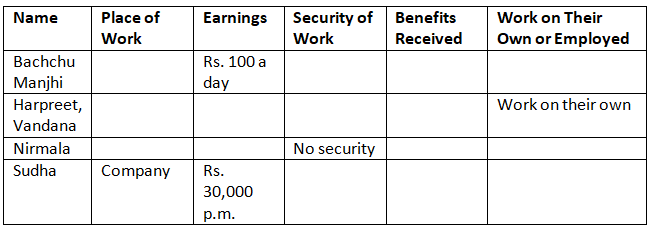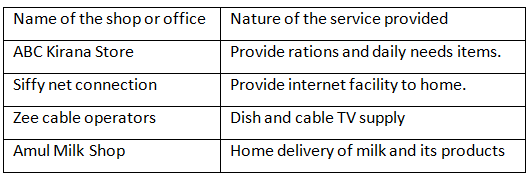NCERT Solutions for Class 6 Civics - Urban Livelihoods
Q1. Read and discuss the following description of the living conditions of workers who come to the labour chowk.
Most workers that we find at the labour chowk cannot afford permanent accommodation and so sleep on pavements near the chowk, or they pay Rs 6 a night for a bed at a nearby night shelter run by the Municipal Corporation. To compensate for the lack of security, local tea and cigarette shops function as banks, moneylenders and safety lockers, all rolled into one. Most workers leave their tools at these shops for the night for safekeeping, and pass on any extra money to them. The shopkeepers keep the money safely and also offer loans to labourers in need.
Source: Aman Sethi, Hindu On-line
Ans: Living condition of workers who came to the labour chowk:
(i) Workers are living in the harsh condition and suffering from lack of basic facilities and security.
(ii) The workers at labour chowk find out regular jobs but do not have permanent jobs.
(iii) They do not have permanent shelter so sleep on pavements or in paid shelter of Municipal corporation.
(iv) The protection of their money and tools are provided by the local tea and cigarettes shops in an unorganised manner.
(v) Labourers also took loans from these shops.
Q2. Complete the following table and discuss how their work is different:
Ans:
Q3. In what ways is a permanent and regular job different from a casual job? Discuss.
Ans:
Q4. What benefits does Sudha get along with her salary?
Ans: Sudha get different benefits along with her salary:
(i) Savings for old age: A part of her salary is kept in fund with government on which she gets interest and retirement.
(ii) Holidays: She doesn’t have to work on Sundays and national holidays. She also get some annual leave
(iii) Medical facilities: She get paid leave for illness and free treatment. Her family get paid medical facilities up to certain amount by the company.
(iv) Job security: She also have the permanent job and security of it.
Q5. Fill in the following table to show the services provided by people in the markets which you visit frequently.
Ans:
|
297 videos|1066 docs|204 tests
|
FAQs on NCERT Solutions for Class 6 Civics - Urban Livelihoods
| 1. What are urban livelihoods? |  |
| 2. What are some common types of urban livelihoods? |  |
| 3. How do urban livelihoods differ from rural livelihoods? |  |
| 4. What are the challenges faced by urban dwellers in securing livelihoods? |  |
| 5. How can government policies support urban livelihoods? |  |

















